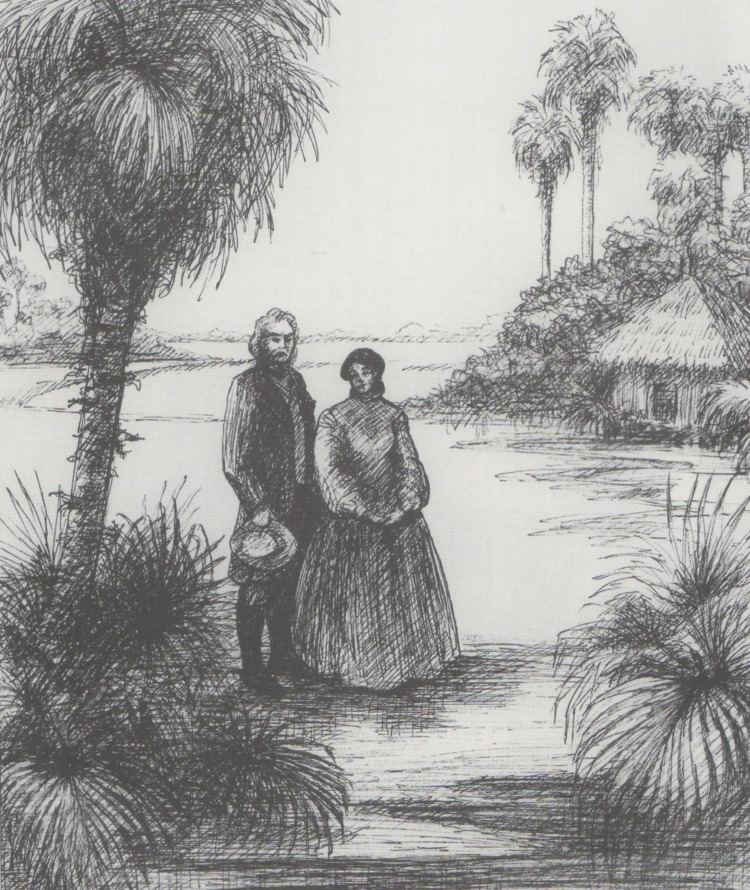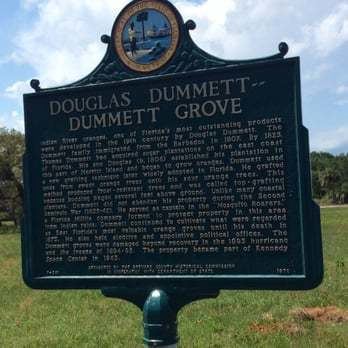Preceded by Thomas T. Russell Name Douglas Dummett | Died 1873 | |
 | ||
Spouse(s) Frances Hunter (m. 1837, div. 1844), Leandra Fernandez | ||
Douglas Dummett (1806–1873) a member of the Legislative Council of the Territory of Florida representing St. Johns County in 1843, and a member of the Florida House of Representatives representing Mosquito County in 1845. He was instrumental in developing the Indian River Citrus industry in Florida.
Contents

Early life
Originally from Barbados, Dummett arrived in Florida as a youth during the 1820s. He was the oldest son of Thomas H. Dummett. Thomas Dummett purchased the John Bunch sugar mill plantation in 1825 near the mouth of the Tomoka River. He later conveyed this property to Douglas. Douglas Dummett operated the plantation from 1828 to 1835. Dummett served as the first postmaster at Tomoka between 1833 and 1836.
Second Seminole War
Early in 1836, during the Second Seminole War, Dummett joined a militia company known as the Mosquito Roarers and was assigned the rank of Captain. He was wounded in the neck while defending a neighbor's sugar plantation at the battle of Dunlawton plantation. After recovering from his wounds, he married the socialite Frances Hunter in 1837, and at the same time became a member of the Territorial Council. His wife petitioned for a divorce in 1844.
Move to New Smyrna
Failing to adapt to city life in Tallahassee, Dummett returned to his home on the lagoon. In 1843 Dummett filed for a new homestead under the Armed Occupation Act and built his home near New Smyrna. Dummett became deputy collector for the nearby port and began a new romance. Contravening an 1832 Territorial Act, Dummett began a family with a young mulatto girl named Leandra Fernandez.
Family
Dummett had a son and three daughters. After his favorite child, Charles, died from a nearby hunting mishap in 1860, Dummett moved his family to the remote southern end of the Mosquito Lagoon in present-day Brevard County. It is uncertain when Dummett became aware of the orange trees in this area near the ancient haulover. It has been reported that his first shipment of oranges, 500 barrels, was in 1828. These may have been taken from the wild sour trees found along the lagoon. It is widely acclaimed, though, that Dummett discovered some sweet orange trees on the old Turnbull lands and began grafting sweet buds to the root stock of the common sour orange trees of the haulover area before 1835.
Premier Indian River Oranges
Dummett's quest for seclusion led him to devote much of his time to this perfectly protected grove, uniquely lodged between two large temperate lagoons. It is thought that Dummett's experiments with grafting, as well as the mild lagoon climate, helped his grove survive the record-setting freeze of 1835 that killed groves throughout the territory.
Dummett's oranges were known for their flavor, commanding a premium of one dollar per box in northern ports. Captain Douglas Dummett shared his knowledge of grafting and cultivation of the famous Indian River citrus with many of the new settlers in the north Indian River area. During the late 1800s his techniques spread south along the Indian River Lagoon. Douglas Dummett lived near his grove until his death in 1873. In 1930 the Federal Trade Commission was forced to issue an order to stop growers around the state from labeling their oranges Indian River Citrus.
